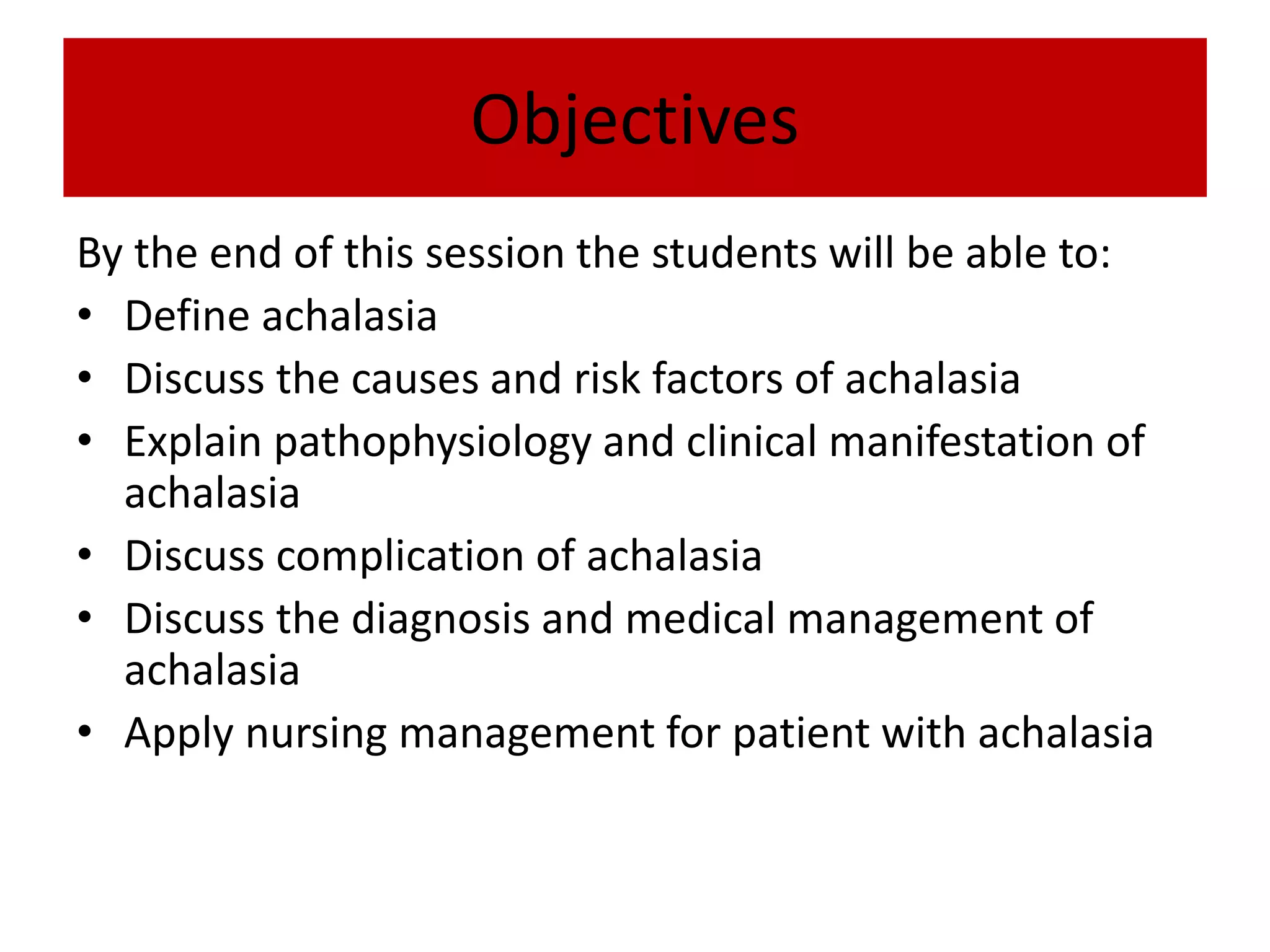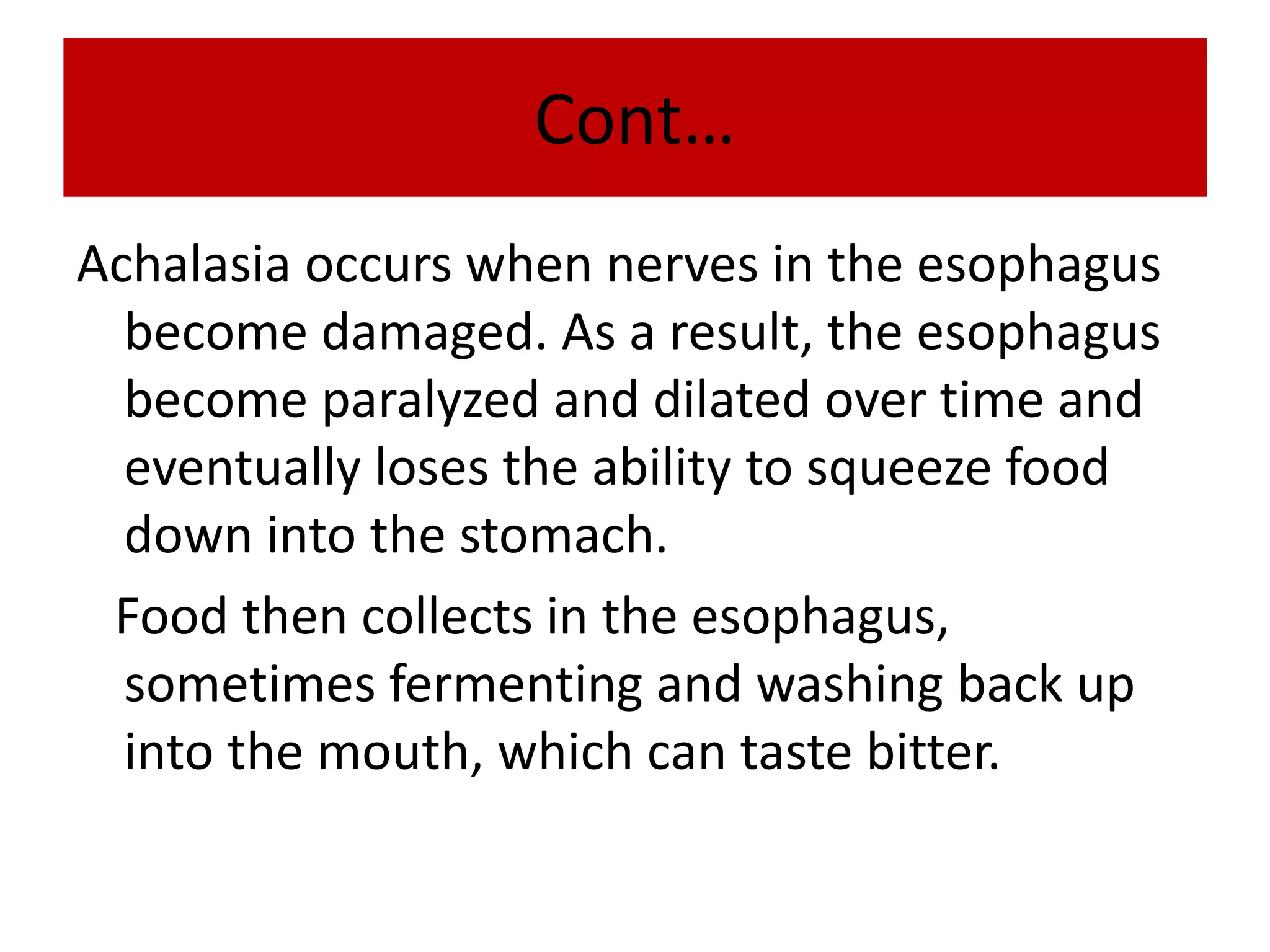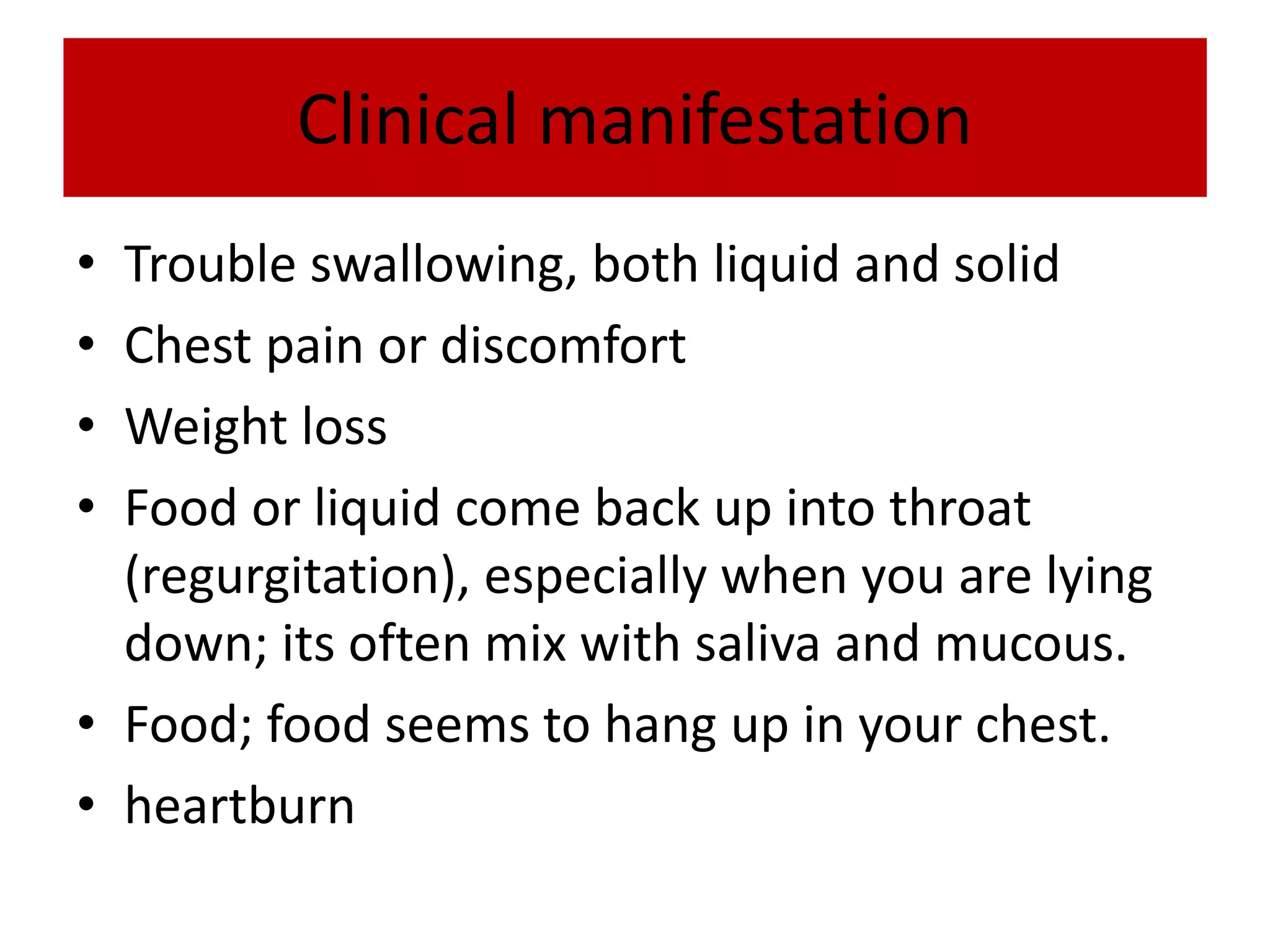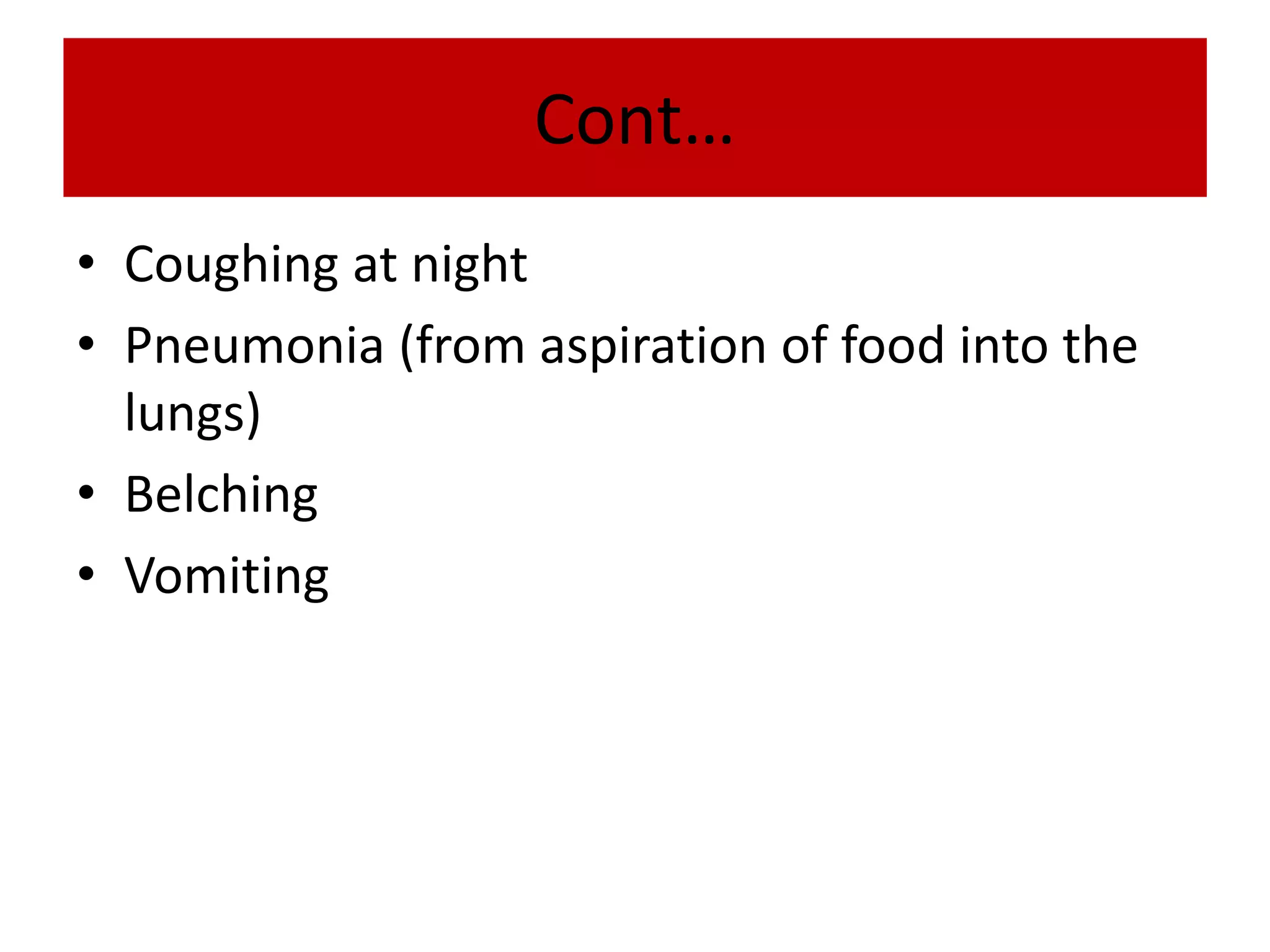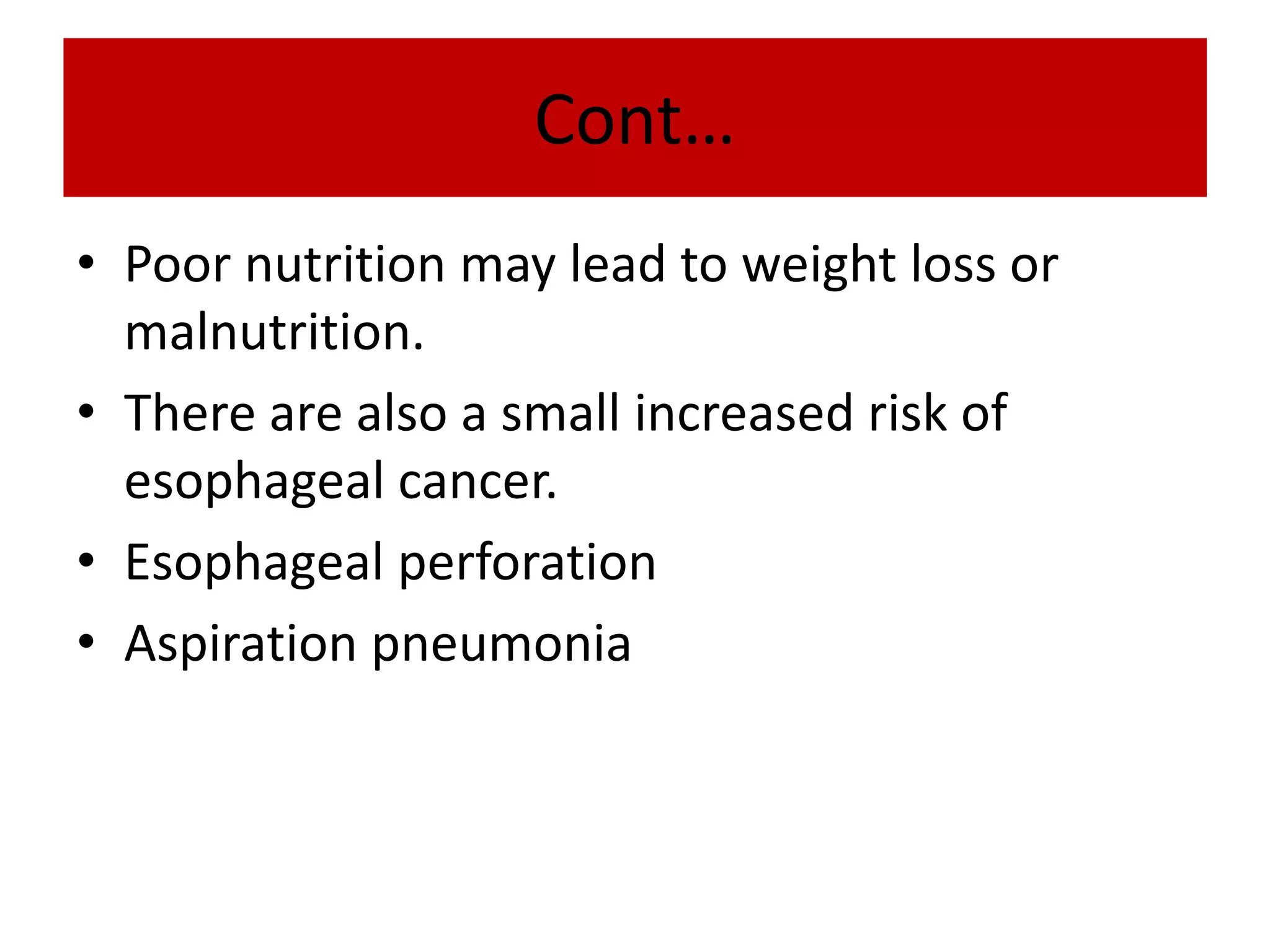This document discusses achalasia, a rare disorder where the lower esophagus fails to relax and allow food to pass into the stomach. It defines achalasia, lists its causes as damage to nerves in the esophagus, and discusses its clinical manifestations such as difficulty swallowing and food returning to the mouth. The document outlines the diagnosis, medical management including balloon dilation and Botox injections, and nursing care for patients with achalasia which focuses on positioning during eating and monitoring for complications.

